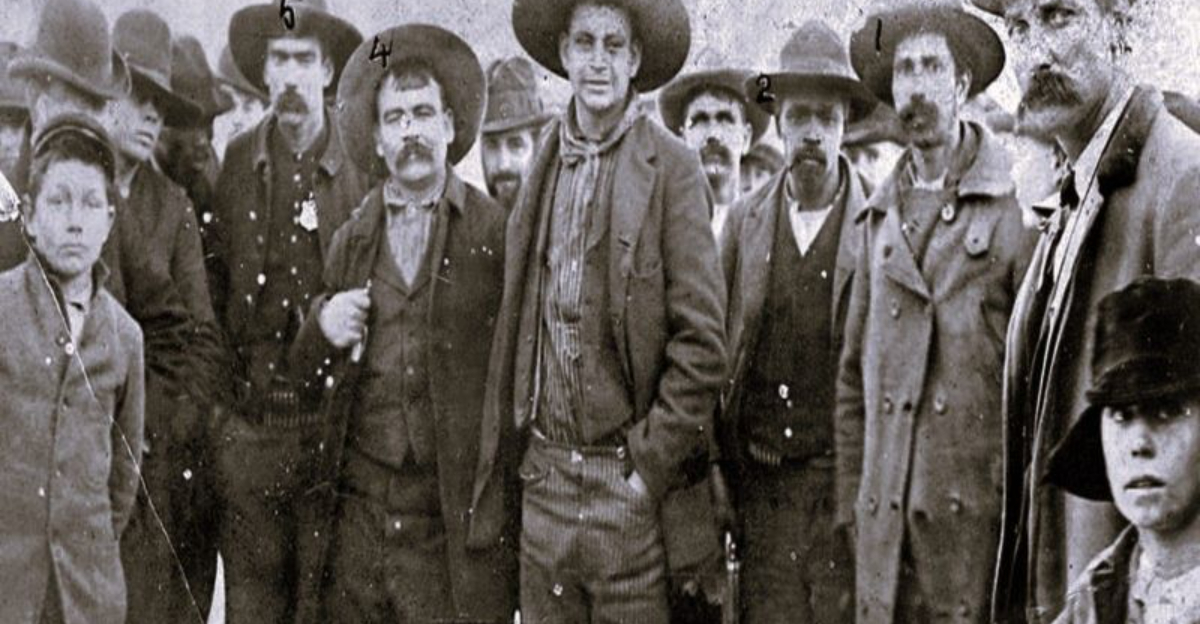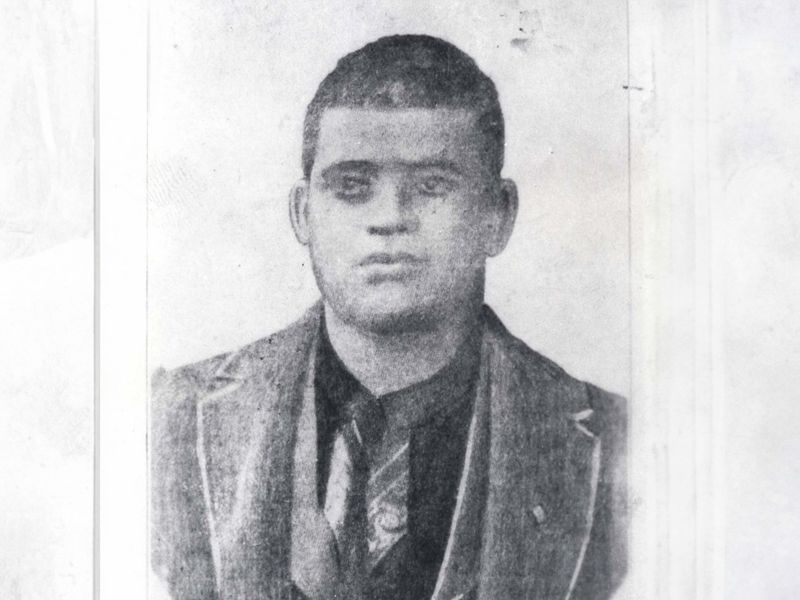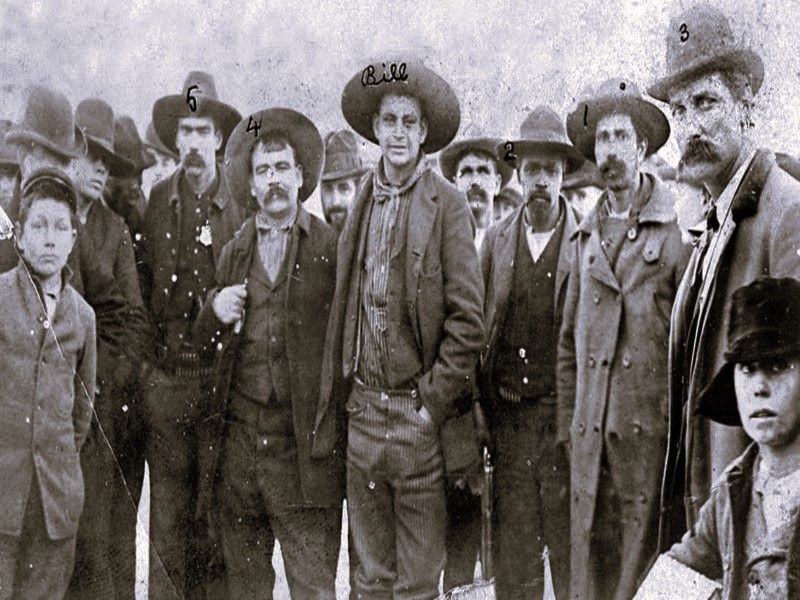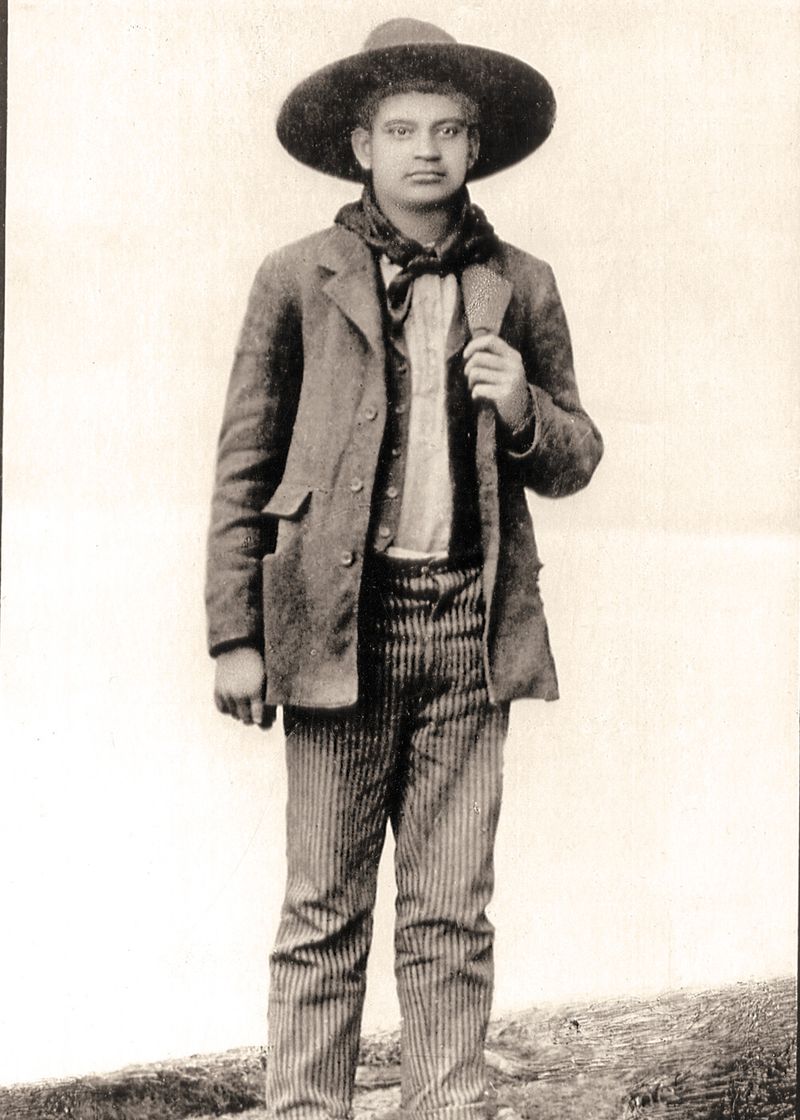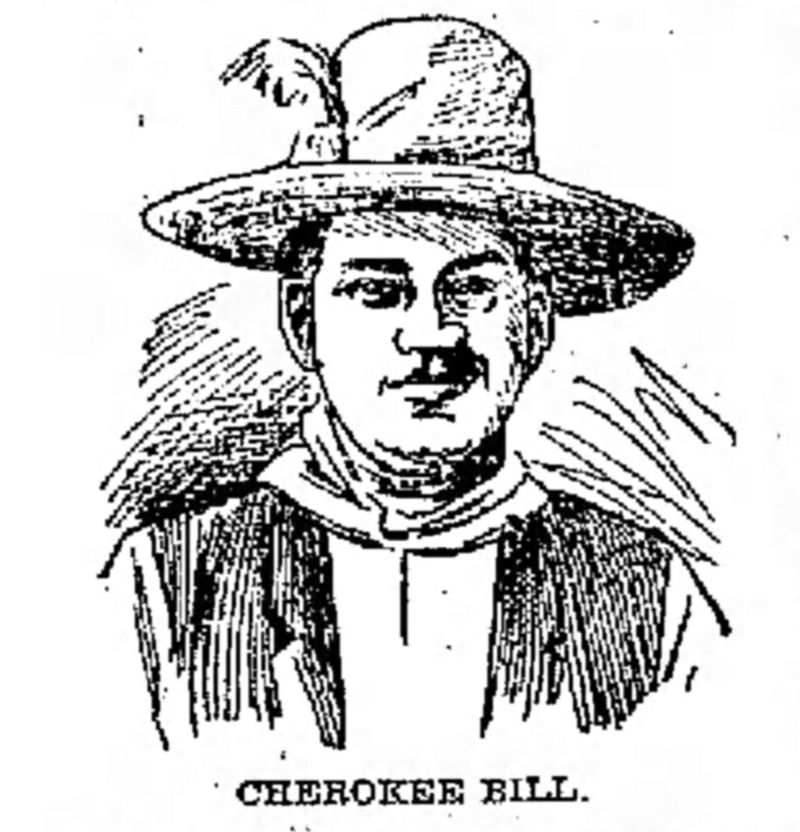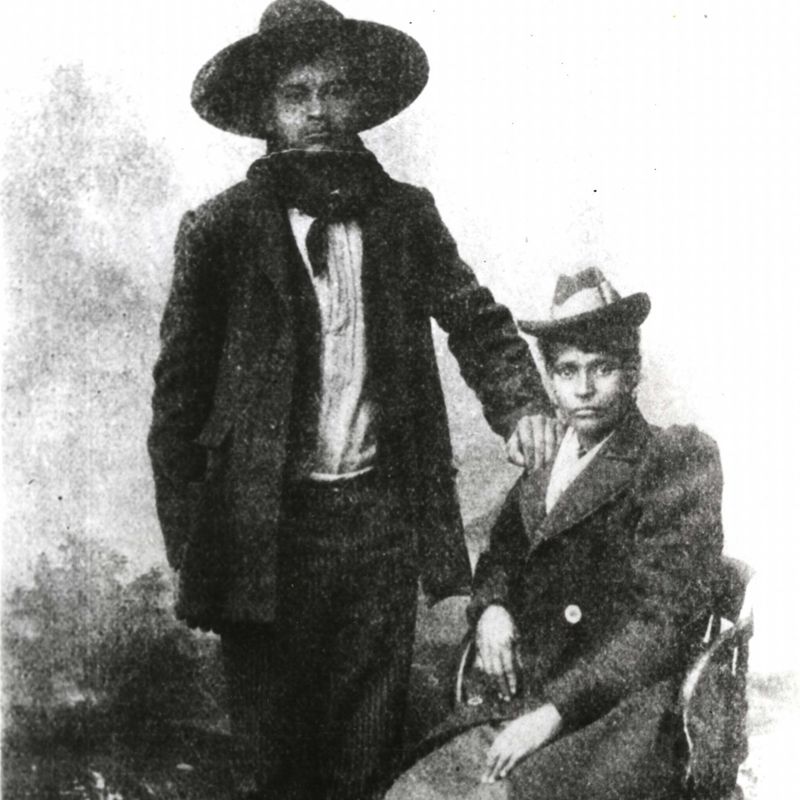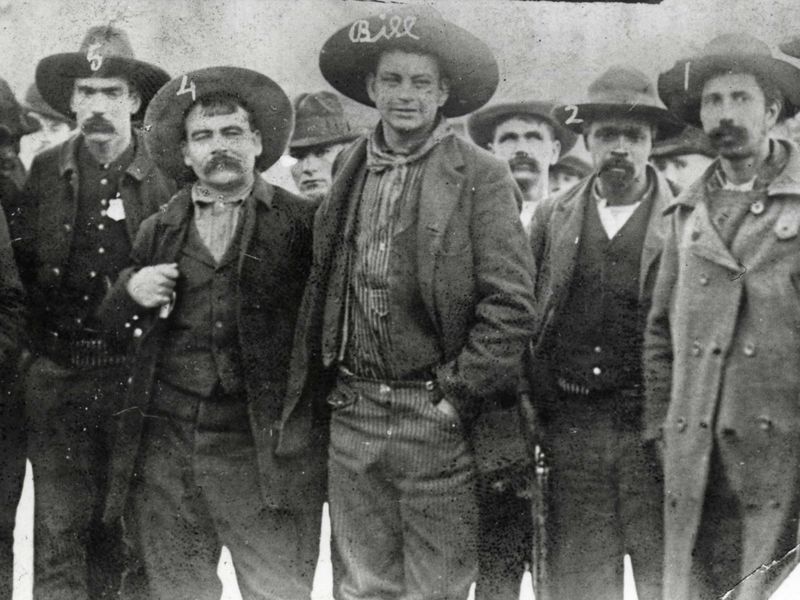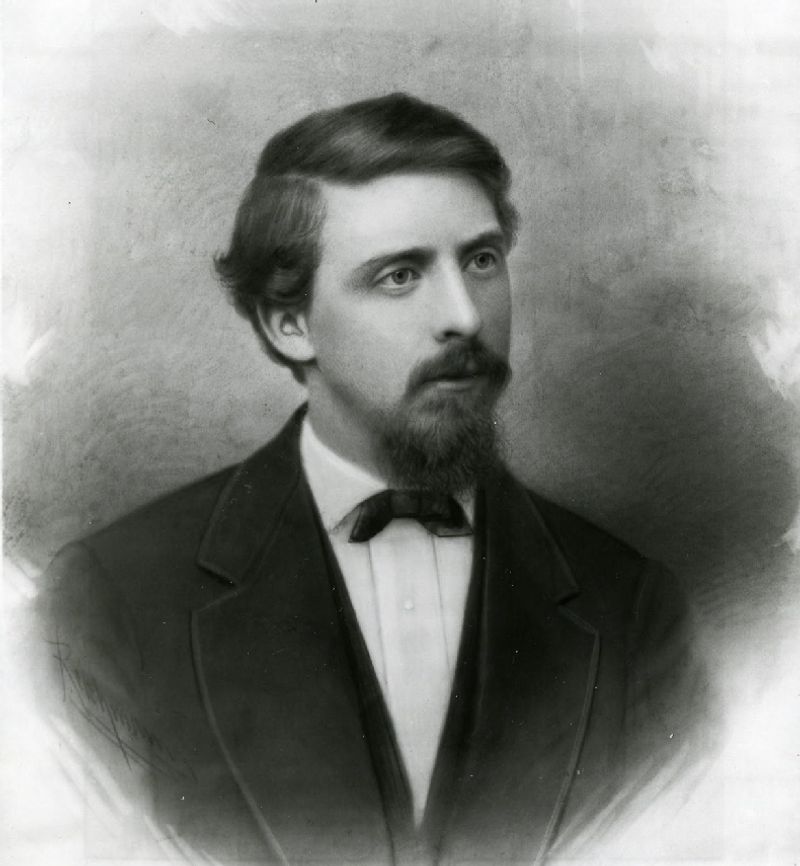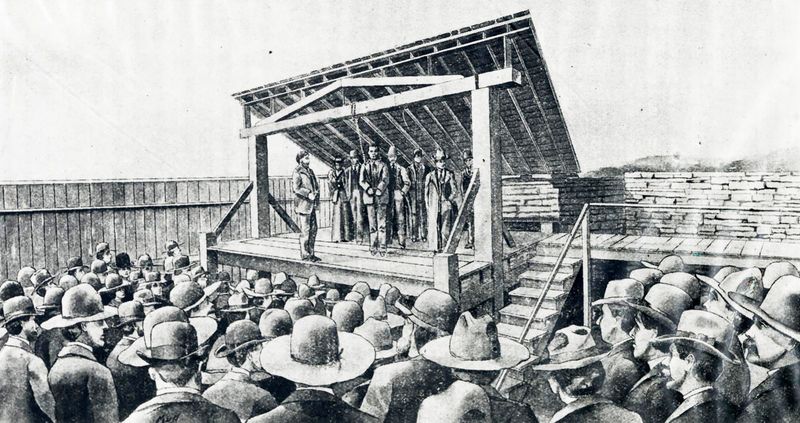Explore the tumultuous life of Cherokee Bill, a notorious outlaw in Oklahoma’s history. Born Crawford Goldsby, his life was marked by violence and lawlessness in the post-Civil War South and Native America.
This blog post delves into ten gripping facts about his life, from his mixed heritage and infamous crimes to his dramatic capture and execution.
Discover the story of a man whose name became synonymous with terror in the Indian Territory during the late 19th century.
1. Real Name: Crawford Goldsby
Crawford Goldsby, known as Cherokee Bill, was born in 1876 to a Black-Cherokee father and a formerly enslaved African American mother. This rich ancestry placed him at a cultural crossroads, where the post-Civil War tensions and the complexities of Native American identity intertwined.
Crawford’s upbringing was a tapestry of cultures, creating a unique but challenging environment. Imagine a young boy navigating the realities of racial identity and heritage in a turbulent time, laying the foundation for his notorious future.
Goldsby’s story begins with these roots, setting the stage for the outlaw he would become.
2. Raised Around Violence
Growing up in Fort Gibson, Oklahoma Territory, Cherokee Bill was enveloped by an environment rife with racial tensions and tribal conflicts. The world around him was fraught with the echoes of displacement and lawlessness, a breeding ground for rebellious spirits.
Picture a young boy witnessing altercations on dusty streets and absorbing the harsh realities of his surroundings. These formative years were steeped in violence, influencing his worldview and future actions.
Fort Gibson, a melting pot of cultures and conflicts, became the backdrop to his early life, shaping the outlaw mentality he later embraced.
3. Joined a Gang at Age 18
At 18, Cherokee Bill joined the notorious Cook Gang, a coalition of outlaws infamous for their audacious crimes across the Indian Territory. Picture the transformation from a young man into an outlaw, driven by a desire for notoriety and rebellion against societal norms.
The gang’s operations involved train robberies, store heists, and bank raids, marking Bill as a key player in their operations. This alliance with notorious criminals cemented his path as a feared outlaw. The Cook Gang provided the adrenaline-fueled lifestyle that appealed to his restless spirit and thirst for infamy.
4. Deadly Reputation
Cherokee Bill’s reputation as “bloodthirsty and remorseless” was well-earned, with an estimated 13 victims, among them lawmen and former friends. Imagine the whispers and fear that followed his name, a ghost haunting the Indian Territory.
His actions spoke louder than words, creating an aura of dread around him. Each crime added to the mythology of his ruthlessness, painting him as a man with little regard for life.
This deadly reputation was both his shield and his curse, a legacy of violence that echoed long after his time. He became a symbol of lawlessness and fear.
5. First Murder: His Brother-in-Law
Cherokee Bill’s descent into murder began with an altercation that turned deadly. His first victim was his sister’s husband, a personal and bloody introduction to the life of crime. This act was not just a crime but a family tragedy, marking the point of no return for Bill.
Imagine the turmoil and anger that propelled him to such an act, a moment that forever tainted familial ties. This murder set the stage for his future exploits, a harbinger of the chaos he would unleash. It was a personal vendetta that spiraled into a notorious career of violence.
6. Robbed Trains, Stores, and Banks
The Cook Gang, with Cherokee Bill as a prominent member, embarked on a spree of robberies, targeting trains, stores, and banks across the Indian Territory. Visualize the adrenaline and chaos of these heists, with Bill at the center orchestrating the action.
Each robbery was a testament to the gang’s audacity and Bill’s leadership, making them infamous across the region. This life of crime was not just about money but power and reputation.
These robberies painted Bill as a man who thrived on defiance against societal norms, a reputation that kept lawmen on high alert.
7. Captured at Fort Gibson
The dramatic capture of Cherokee Bill in 1895 ended with a standoff that showcased his notoriety and the determination of law enforcement. Envision the tense atmosphere, with lawmen closing in and Bill’s defiance fueling every moment.
Captured by Deputy U.S. Marshal Bill Tilghman, a legendary figure in his own right, this moment marked a turning point. It was a battle of wits and wills, ending with Bill being overpowered.
His capture resonated throughout the territory, a brief pause in the chaos he had created. This was a testament to law enforcement’s resolve against rampant crime.
8. Tried in Fort Smith, Arkansas
Cherokee Bill’s trial in Fort Smith, Arkansas, before the infamous “Hanging Judge” Isaac Parker was a spectacle of justice. Picture the courtroom, filled with tension and anticipation, as Parker, known for his stern demeanor, presided over the case.
Bill faced judgment for the murder of Ernest Melton, with the weight of his crimes pressing heavily. This trial was not just a legal battle but a symbolic confrontation of law against lawlessness.
The verdict sealed Bill’s fate, marking the end of his reign of terror. The trial underscored the harsh justice of the era, a turning point in outlaw history.
9. Tried to Escape Prison
While awaiting execution, Cherokee Bill’s audacity didn’t wane. He attempted a daring escape from the federal jail, killing a guard in the process. Imagine the chaos and desperation that fueled this bold move.
This escape attempt was a testament to his relentless spirit and unwillingness to accept his fate. It underscored the danger he posed even when confined. This incident further cemented his legacy as an unrepentant outlaw.
The failed escape highlighted his defiance until the end, a man who lived by his own rules, leaving a trail of chaos behind.
10. Executed at Age 20
Cherokee Bill faced his execution at just 20 years old, a somber end to a life marked by violence. Picture him on the gallows, with the weight of his actions hanging heavily like the noose around his neck.
His final words, “I came here to die, not make a speech,” were chillingly straightforward. This moment was the culmination of his tumultuous life, a young man who had become a symbol of lawlessness.
The execution was a stark reminder of the swift justice of the time, closing the chapter on one of Oklahoma’s most infamous outlaws.
